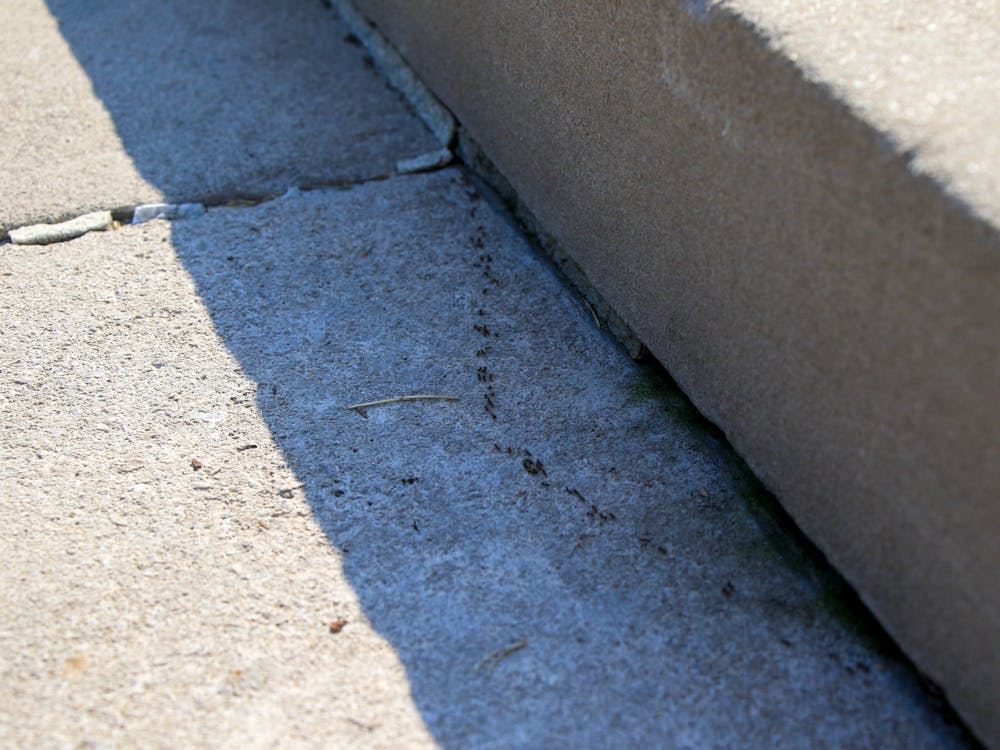Andrew Negus, a first-year involved with the Catholic Center, arrived at his first-ever small group meeting excited for doughnuts.
His small group leader placed a box on the table. When he opened them, Negus was met with a not so sweet surprise — the whole box was filled with ants.
But Duke’s ants aren’t just abundant around baked goods. As first-year Ishanvi Malayanil puts it, “it’s a swarm of ants everywhere.”
It’s common to see seasonal fluctuations of populations of insects on campus due to weather or migration, according to Bernard Smith, housing and residence life director of facilities operations.
Smith shared that requests for pest management are processed once or twice a week through the Ecolab Integrated Pest Management book. Smith did not respond to a question regarding the number of maintenance requests regarding ants.
In response to these requests, Smith said that Ecolab services “use a combination of techniques, such as baiting and spraying, always following the integrative pest management procedure.”
He suggests students begin putting food away in proper containers, using a refrigerator and cleaning up food debris in common spaces and in their rooms. He does not recommend students handle toxin sprays or pesticides in residence halls.
First-year Vittoria Corvelli said that she’s seen a lot of ants in her room. Ayush Sheth, Corvelli’s friend, noted that ants are on desk tables, the ground and near windows.
However, both Sheth and Corvelli claim that the room is very clean, with Corvelli and her roommate keeping their snacks tightly sealed and vacuuming their floor regularly.
Another first-year, Hakeem Shitta-Bey, first noticed ants in the sink bowl of his second-floor bathroom in the Alspaugh dorm. At first, he was surprised to see them because he had not noticed any on the first floor, but he attributes this to the fact that the window in his bathroom is always open.
However, Shitta-Bey and Smith both believe that the facilities staff removes trash frequently enough, which is about once a day in Shitta-Bey's dorm. According to both, waste is removed once to twice a day inside Duke’s residence halls, restrooms and other public areas.
But even the most careful handling of food and waste might not keep ants away.
“Ants smell. They can find food really, really well,” according to Professor in Biology Ke Dong, a neurotoxicologist.
Even biologists experience them: Dong noticed the ant problem on campus when she dealt with a handful of them crawling into her office drawers. She quickly identified the source as a box of cookies sitting inside her cabinet.
Dong studies the effects of different toxins that include insecticides and repellents on the ion channel receptors of insects, specifically focusing on mosquitoes. She provided some insight on how Duke can use pesticide science to help control the ants.
While Dong understands that many may be annoyed by the presence of these little creatures indoors, she noted that toxins against insects should be used sparingly. Even though the chemicals that most insecticides and repellents use are safer for human exposure than they used to be decades ago due to increased government regulations, their long-term effects on the ecosystem could still be detrimental.
“The bottom line [is that] I think insecticides are needed, but you just have to use them wisely,” Dong said.
The issues with the overuse of toxins that aim to eliminate insects are two-fold, according to Dong.
One component is that when chemicals from insecticides are led into waterways and further into the environment, they can affect insects in areas beyond where they were intended to affect, per Dong.
The second component is that when insecticides are used on a large scale, there is a chance that a genetic mutation will exist and allow the insect to survive, according to Dong. When the insect with a mutation exists and reproduces, it can pass that gene on, leading to the development of a population that is immune to the repellent chemical. This effect renders the insecticides useless and encourages people to use stronger toxins.
Dong also differentiates between “insects” and “pests.” If an insect is causing harm, like a mosquito spreading viruses or a fire ant biting someone, it can be considered a pest and should be eliminated from spaces where humans actively inhabit. If not, then it is best to leave it alone or try to remove it in a gentle manner.
But Dong has ideas on how to combat this phenomenon — alternating insecticide use.
“If insecticide resistance takes over the entire pest population, we have a big problem,” she wrote in an email.
Based on Dong’s definition, pavement ants that are found around campus are not actually pests. They’re simply insects; slightly unsettling, but not actively harmful.
So for now, ants and Blue Devils may just have to coexist.
Get The Chronicle straight to your inbox
Signup for our weekly newsletter. Cancel at any time.

Sophie Levenson is a Trinity junior and a sports managing editor of The Chronicle's 120th volume.

Olivia Kim is a Trinity first-year and a staff reporter of The Chronicle's 118th volume.

